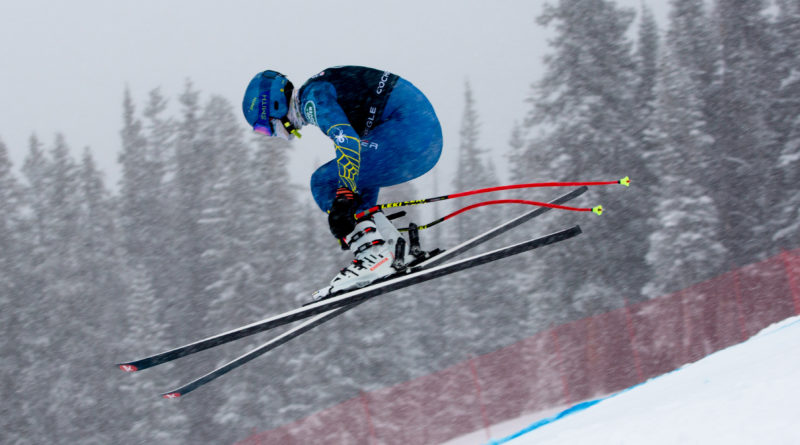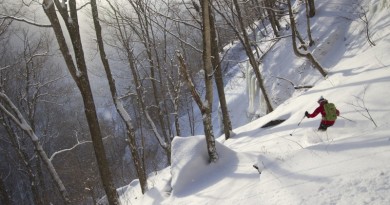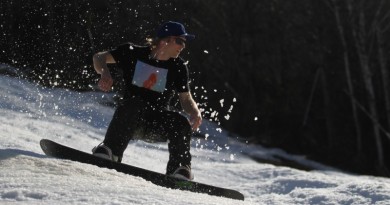Ryan Cochran-Siegle Sends It
By Marina Knight
Sometimes when you watch sports, maybe a sport you have been watching for years, suddenly there’s a moment that strikes at something inside you. After the fact, you might replay what you just saw in your head. It sticks with you because the seemingly undoable was just done.
One of these moments happened as I was watching the Alpine World Cup on December 30, 2020. It was on an icy downhill race track circuit in Bormio, Italy known as the Stelvio. Ryan Cochran-Siegle, who was having his best season ever with two World Cup podiums, was in full send mode. He was skiing with a freedom and abandon he had recently rediscovered and he was skiing fast.
As he came into a slight compression before a jump on the downhill course, going an estimated 85 mph according to commentators, the 28-year-old native of Starksboro, Vt. was ever so slightly back on his skis. The knoll sent him soaring through the air. When his skis slapped the snow, slightly off-kilter, the forces tossed him nearly onto his back. It was a moment that makes you hold your breath. On TV, the camera flashed to racers in the finish area who were putting their hands on their heads, aghast.
But Cochran-Siegle somehow pulled out of it, using immense strength to essentially do a sit-up, straining against the G-forces to pull his body forward. He regained his balance – then momentarily lost it again. But then he pulled it back together. His skis kept tracking cleanly and he stayed fast enough for 7th place in the downhill race that day. It was the save of the day, if not the year.
“I was just getting a little bit rattled and backseat and a little beyond my comfort zone. I think I was lucky I was able to carry through there,” Cochran-Siegle said after.
Ryan Cochran Siegle, or RCS as many know him, had come into that day’s race as the favorite, an anomaly for any male member of the U.S. Alpine Ski Team.
That race run on the Stelvio (and his winning Super G run the day before) displayed a type of skiing that Cochran-Siegle has recently started to feel again. “I think where I’m at right now as far as my skiing and my capability goes, is that I just have a lot of trust that I don’t have to plan for everything,” he said.
The day before Cochran-Siegle had stood at the top of the podium after winning his first World Cup race, the Bormio Super G on Dec. 29. Not only did Cochran-Siegle win that race, he put 0.79 of a second between him and the second-place finisher Vincent Kriechmayr of Austria. It was the largest margin any man has won by since 2016. And no American man had won a Super G since Bode Miller in 2007.
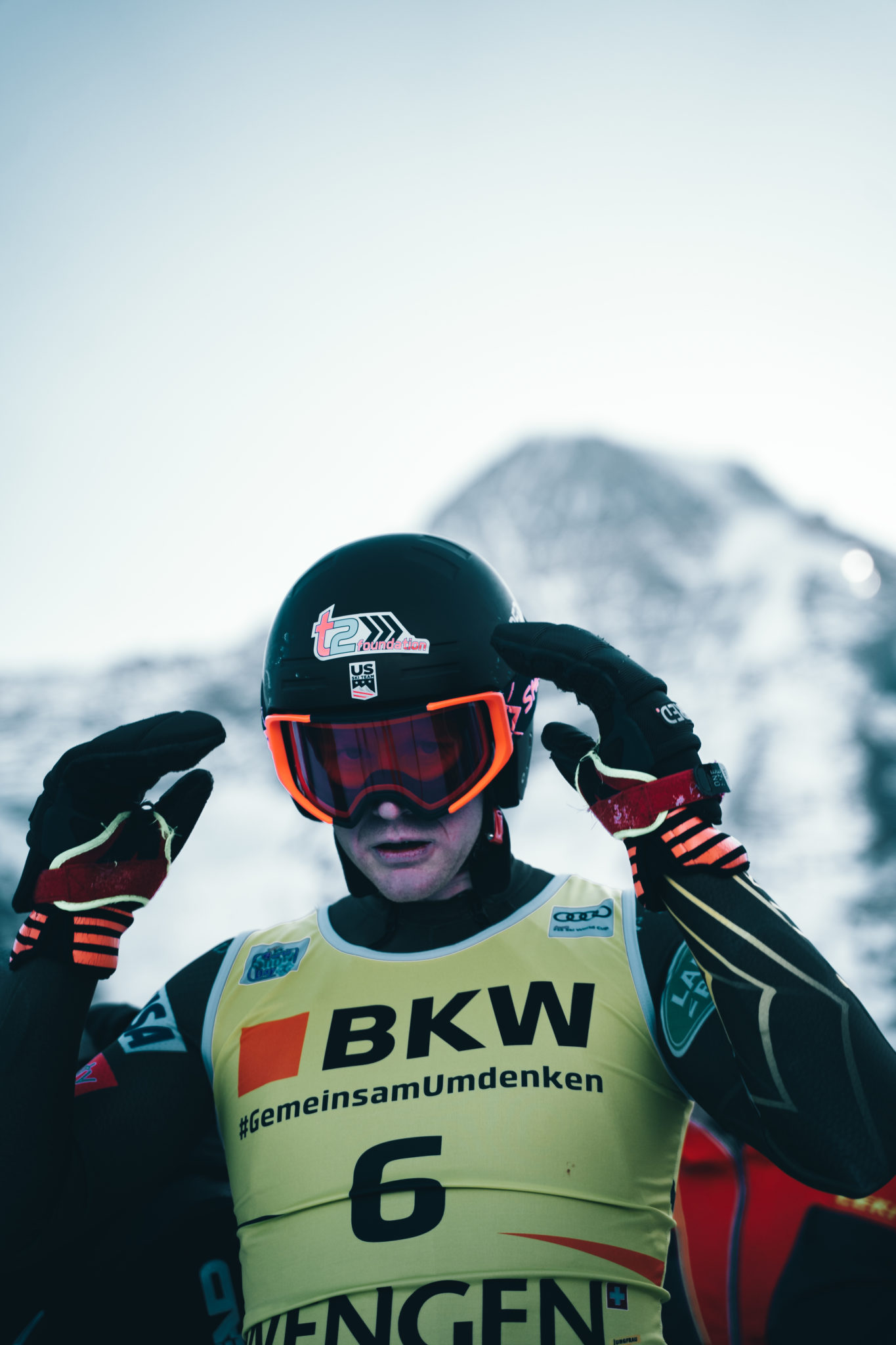 His win was a much-needed pick-me-up for the US team. It also brought into high relief the payoff of Cochran-Siegle’s hard work and perseverance.
His win was a much-needed pick-me-up for the US team. It also brought into high relief the payoff of Cochran-Siegle’s hard work and perseverance.
On Track to Win
Ryan Cochran-Siegle had been poised for greatness early in his career. He won double gold World Junior Championships medals in 2012. Then a crash in February of 2013 at the World Championships in Schladming, Austria destroyed his knee, requiring multiple surgeries. That took him out of competition for nearly four years.
Not many athletes can come back after being out with an injury like that for so long, but Cochran-Siegle’s attitude prevailed. “Having had prior success, I didn’t want that to be my final race. I wasn’t ready to be done,” he told Ski Racing Media at the time.
Cochran-Siegle came back from that and returned to with a top-15 finish in Super G at the World Championships in 2016. Then, in 2019, his potential shone through as he posted a 6th place World Cup finish and then a 5th in Alpine Combined in Bormio in December 2019.
Coming into this season, those flashes of brilliance shone brighter. He scored an 8th in Super G in Val Gardena, Italy on December 18 and the next day finished second in the Downhill, his first time standing on the World Cup podium.
Then came Bormio. He posted the fastest times in the first two Downhill training runs, won the Super G and was a favorite coming into the Downhill.
“I mean, it’s definitely a surprise,” the 28-year old said after winning the Super G. “I feel like I can trust myself right now, trust to just let things flow.”
Let It Flow
Let things flow… Inside that simple statement is the story of an athlete who has come full circle, from a kid lapping the T bar at Cochran’s tiny ski area in Richmond, Vt., to a hard-working junior athlete, to the 2012 World Junior Champion to a World Cup race winner. Along the way, he has been constantly learning: becoming aware of his own skiing and what his strengths and weaknesses were.
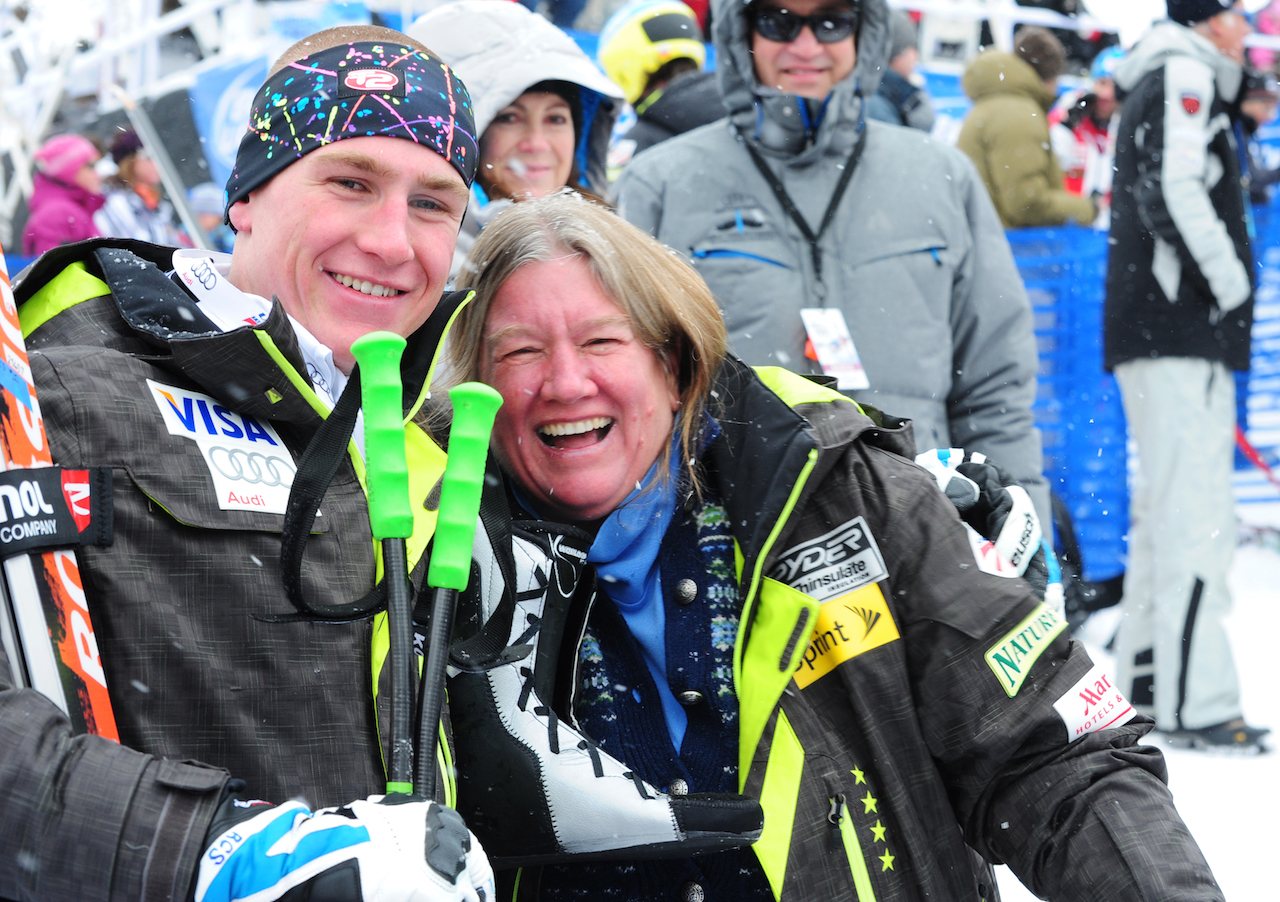
Photo: Tom Kelly/U.S. Ski Team
No one knows Ryan better than his mother, Barbara Ann Cochran, the 1972 Olympic Gold Medalist in slalom. She sees his coming of age as kind of a predetermined destiny: if you are a Cochran, you reach the highest echelons of ski racing. Ryan, she says was basically born to ski.
“When he was little he was so passionate, he had such a natural feel for skiing,” she said in a recent interview. She cites the example of when her son, then 5, sat in on a sports psychology workshop she was running at a summer camp. All the athletes were asked to share what they think about when they’re standing in the starting gate.
“Ryan said, ‘I can’t wait to go,’” she remembers.
What was different this season, a season punctuated with his first two World Cup podiums, is that he is redefining how he thinks about perfection and learning to let go.
“What I’m feeling is not trying to be perfect in the start,” he said on a call the first week in January as he and teammates were preparing for the World Cup GS races in Adelboden, Switzerland. “I mean having a plan and trying to find a style of skiing that I’m not forcing. I’m skiing with a good conservation of energy and speed and skiing fluidly through things. I don’t feel like I need to be super harsh on the ski, I can really allow the hill to take me down.”
Life at Full Speed
Flash back 20 years to the top of Cochran’s Ski Area in Richmond. It was the 40th Anniversary of the ski area and a big party was going on down below. In typical Vermont fashion, it had just rained and then turned freezing cold, so the whole hill was one big sheet of ice. A group of skiers gathered for the last run of the day, the daily “Bombing Run.” At Cochran’s, the lodge is situated at the top of a small hill adjacent to the ski run, so the most efficient way to get back to it is to simply point your skis straight and send it to see how close you can get before you have to take your skis off and walk.
“You just tuck from the top,” Cochran-Siegle explained. “One by one each person just straight lines to the lodge.” Cochran-Siegle, being one of the youngest, was among the first to go.
“I was going way faster than I had ever gone before. At that point, it was a really good bombing run if I made it to the lodge. That was the goal,” he continued.
You can see the scene, a small Cochran-Siegle, speeding solo down the icy face of Cochran’s in his pink, floral-camo race suit, headed straight for the lodge. He picked up so much speed that he caught air over a small knoll going up the hill on the other side.
“I actually aired out on the second knoll, landed on the bank of snow that falls off the roof of the lodge and my skis just stayed there,” he said. When that happened, Cochran-Siegle double ejected from his skis and supermanned, head-first through the plate glass window, landing inside the lodge. Slightly stunned, with glass lying everywhere and conversations among party-goers having full-stopped, Cochran-Siegle said he simply got up and climbed back out the window he had just crashed through.
What’s striking about this story is that in that moment, achieving flow state was an unconscious effort.
Now, as he steps into the start gate of some of the world’s gnarliest race courses, far mightier and menacing than the face of Cochran’s, he is tapping into the essence of that kid speeding toward the lodge.
“Initially, as you get on the World Cup, you’re so focused on being fast and getting results that you miss out on being present and just skiing. I’m confident that the way I react will be correct. You have to have the trust to not have to try your hardest or be your most perfect. I think that’s the biggest change now compared to past seasons,” he said.
What was coming next would test this: Kitzbuhel and the famous Hahnenkamm. “People always get very excited, especially for Kitzbuhel. There’s such a hype about it,” Cochran-Siegle said of the venue where the famous downhill is held each year and where his uncle, Bobby Cochran, was the first American to win the Hahnenkamm Cup.
On January 20, Cochran-Siegle plummeted down the Kitzbuhel, Austria Downhill training course in full flow. On what is considered one of the hardest courses in the world he let go and posted the fastest time of the day. On the following day’s training run, he had trouble posting the 22nd fastest time. His finishes so far this season had put him in third for overall points in Downhill for the World Cup.
He was a favorite coming into what was just his second Hahnenkamm Downhill, after not finishing in 2020. At the top of the course, he flew, posting splits that would put him in the lead. Then, more than half-way down he soared over a rise, landed and was thrown off balance. This time he could not pull himself back. Skidding across the snow at 60 mph, he crashed through the safety netting.
As race personnel rushed to his side, Cochran-Siegle took off his helmet and appeared to be ok. X-rays would later show a cervical fracture in his spine, enough to take him off the race course for a few weeks, at minimum. Later he posted the video of the crash to his Instagram account with the message: “Lucky to walk away with nothing more than a minor broken neck. Already hoping for my third attempt at conquering this beast of a course next year!”
Postscript: There is probably no such thing as a “minor” broken neck. Cochran-Siegle’s injury was enough to take him out of competition for the rest of the season, a season where he was coming into his own and showing the world what he could do.

